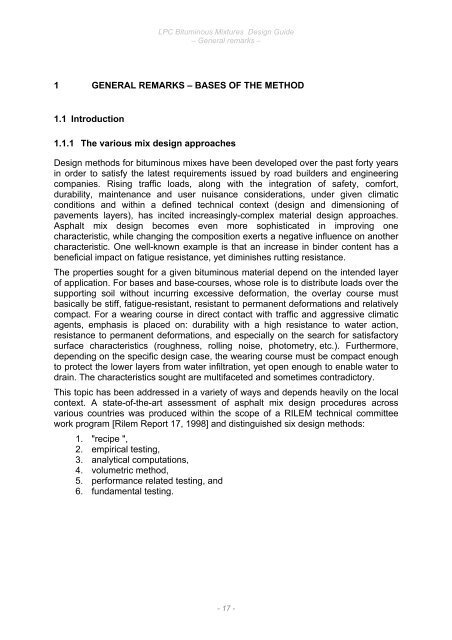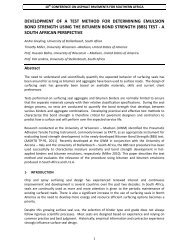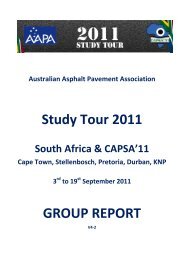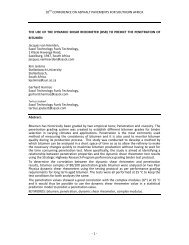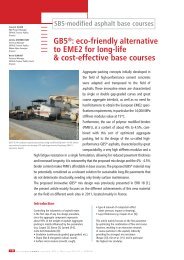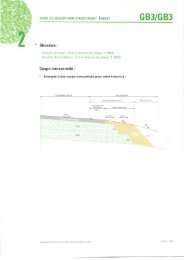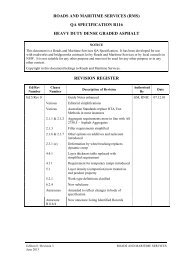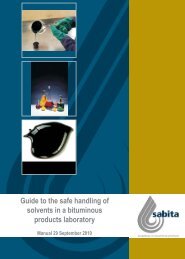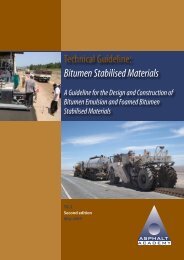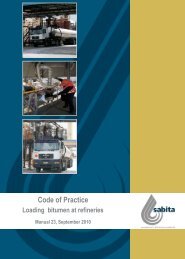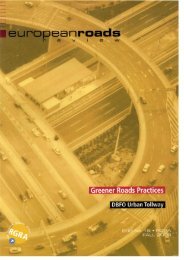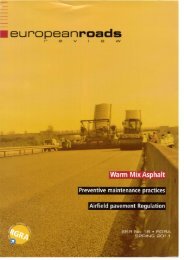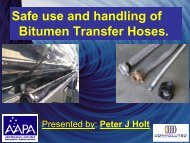6. LPC Bituminous Mixtures Design Guide, Sept 2007. - Aapaq.org
6. LPC Bituminous Mixtures Design Guide, Sept 2007. - Aapaq.org
6. LPC Bituminous Mixtures Design Guide, Sept 2007. - Aapaq.org
You also want an ePaper? Increase the reach of your titles
YUMPU automatically turns print PDFs into web optimized ePapers that Google loves.
<strong>LPC</strong> <strong>Bituminous</strong> <strong>Mixtures</strong> <strong>Design</strong> <strong>Guide</strong>– General remarks –1 GENERAL REMARKS – BASES OF THE METHOD1.1 Introduction1.1.1 The various mix design approaches<strong>Design</strong> methods for bituminous mixes have been developed over the past forty yearsin order to satisfy the latest requirements issued by road builders and engineeringcompanies. Rising traffic loads, along with the integration of safety, comfort,durability, maintenance and user nuisance considerations, under given climaticconditions and within a defined technical context (design and dimensioning ofpavements layers), has incited increasingly-complex material design approaches.Asphalt mix design becomes even more sophisticated in improving onecharacteristic, while changing the composition exerts a negative influence on anothercharacteristic. One well-known example is that an increase in binder content has abeneficial impact on fatigue resistance, yet diminishes rutting resistance.The properties sought for a given bituminous material depend on the intended layerof application. For bases and base-courses, whose role is to distribute loads over thesupporting soil without incurring excessive deformation, the overlay course mustbasically be stiff, fatigue-resistant, resistant to permanent deformations and relativelycompact. For a wearing course in direct contact with traffic and aggressive climaticagents, emphasis is placed on: durability with a high resistance to water action,resistance to permanent deformations, and especially on the search for satisfactorysurface characteristics (roughness, rolling noise, photometry, etc.). Furthermore,depending on the specific design case, the wearing course must be compact enoughto protect the lower layers from water infiltration, yet open enough to enable water todrain. The characteristics sought are multifaceted and sometimes contradictory.This topic has been addressed in a variety of ways and depends heavily on the localcontext. A state-of-the-art assessment of asphalt mix design procedures acrossvarious countries was produced within the scope of a RILEM technical committeework program [Rilem Report 17, 1998] and distinguished six design methods:1. "recipe ",2. empirical testing,3. analytical computations,4. volumetric method,5. performance related testing, and<strong>6.</strong> fundamental testing.- 17 -


